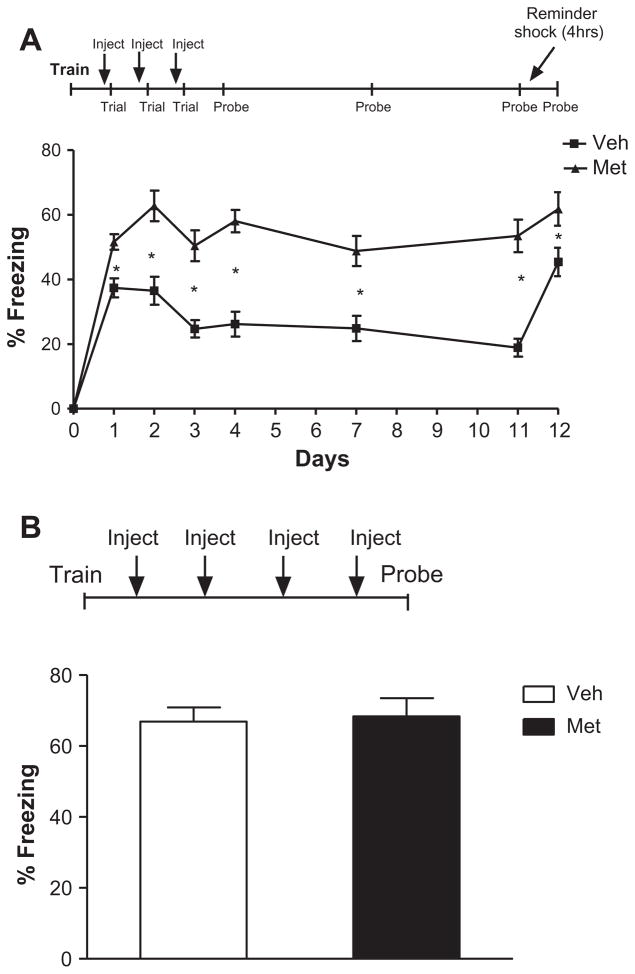Fig. 4.
Metyrapone inhibits multiple trial extinction in a lasting manner and is dependent on reactivation of the fear memory. (A) Repeated injection of meytrapone 90 min prior to extinction trials for 3 days led to significantly enhanced fear memory lasting at least 1 week [mixed ANOVA, main effect of group F(1, 22) = 35.38, p = 0.000006; main effect of day F(6, 32) = 10.13, p < 0.000001, group × day interaction F(6132) = 3.08, p = 0.0074]. Student’s t-test of days 1–3 (p = 0.0011, p = 0.00048, p = 0.00011, respectively) indicate enhanced memory in the metyrapone-treated animals. Student’s t-test of days 4, 7 and 11 (p < 0.000001, p < .00070, p < 0.000001) indicate sustained enhanced fear memory, even in the absence of metyrapone. Reminder shock reversed the effects of repeatedly exposing mice to the context in the absence of the shock (student’s t-test, Veh.: day 11 vs. day 12, p < 0.000001). Reminder shock had no effect on the metyrapone-treated animals (student’s t-test, Met.: day 11 vs. day 12, p = 0.26). Metyrapone- and vehicle-treated animals did differ significantly on day 12 (day 12: Met. vs. Veh., p < 0.025). No significant differences were observed during training across groups (p > 0.05). (B) Pre-retrieval metyrapone effects with multiple trials were dependent on reactivation of the memory and were not simply an effect of repeated metyrapone administration (1-way ANOVA, no main effect of group, F(1, 22) = 0.053, p = 0.82). No significant differences were observed during training across groups (p > 0.05). N = 12 for all groups.

